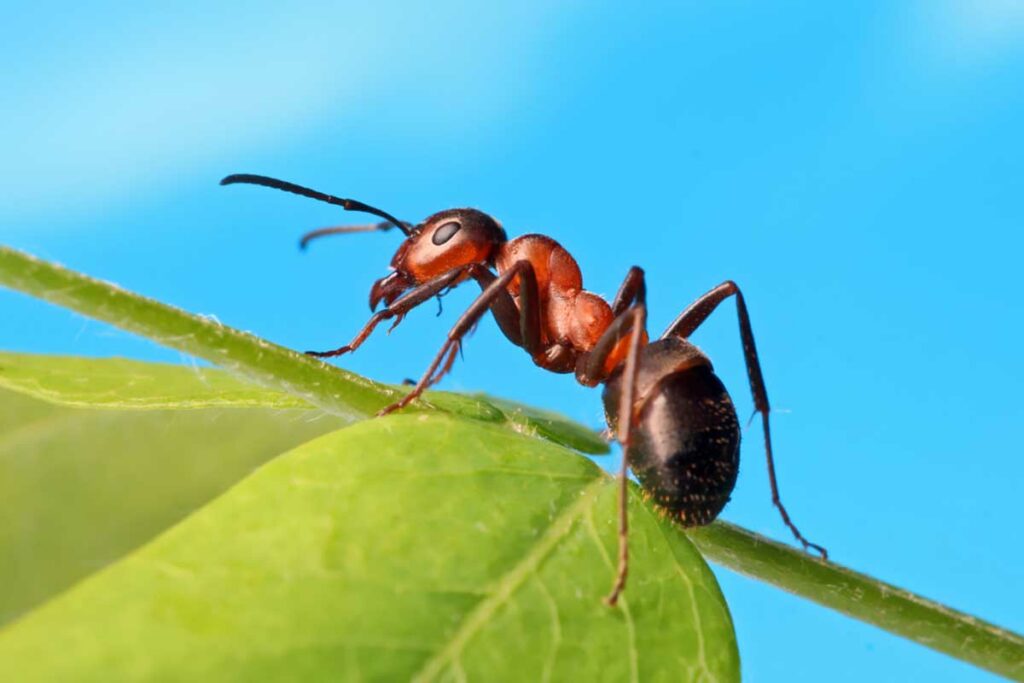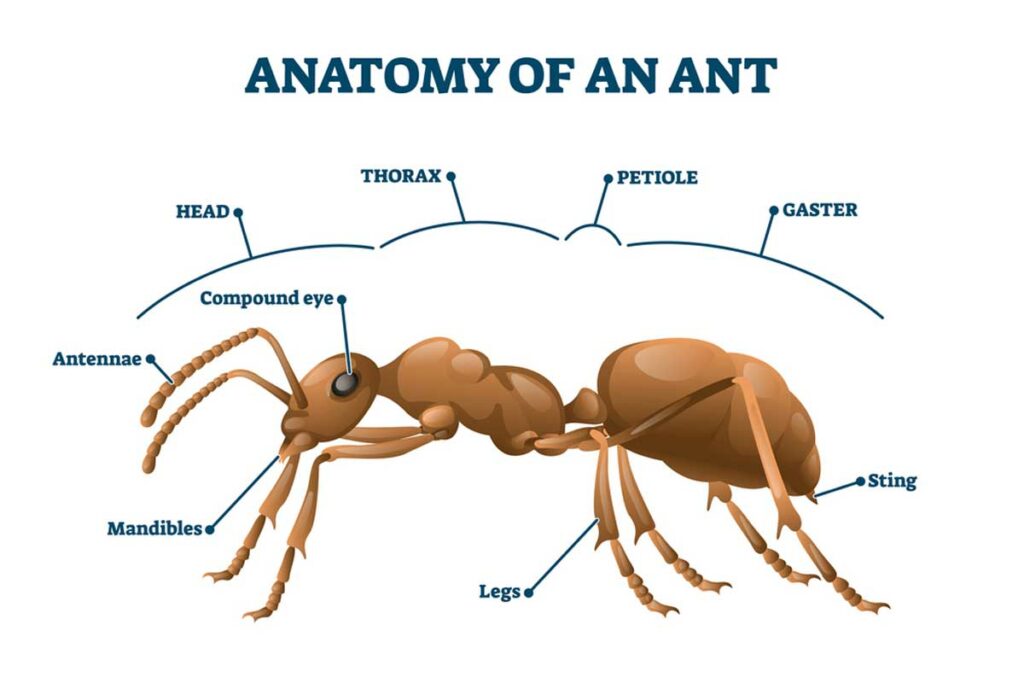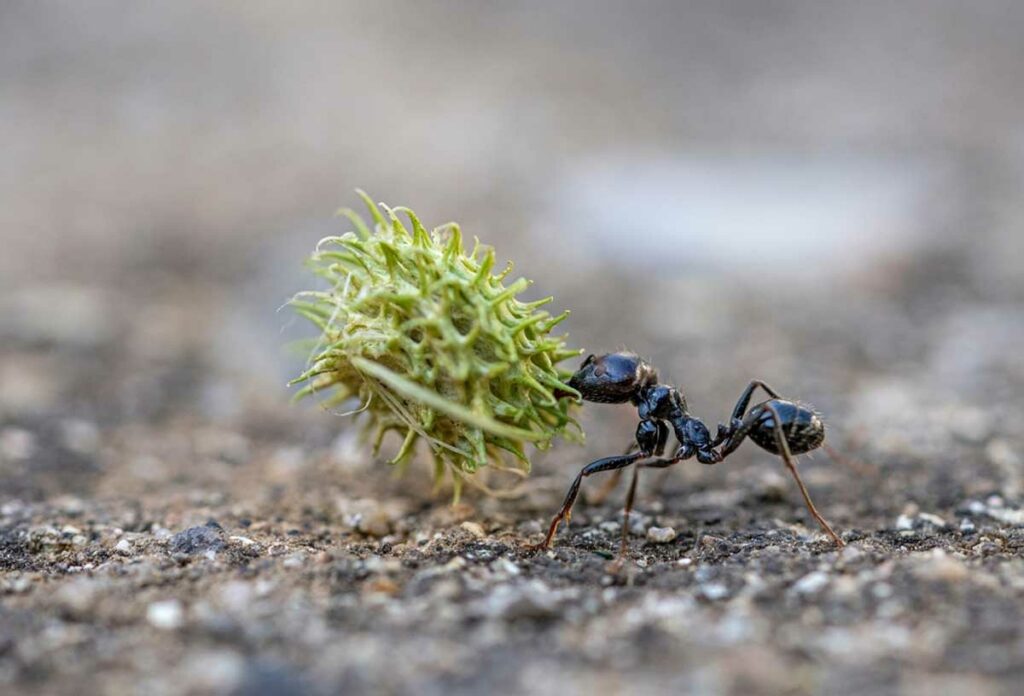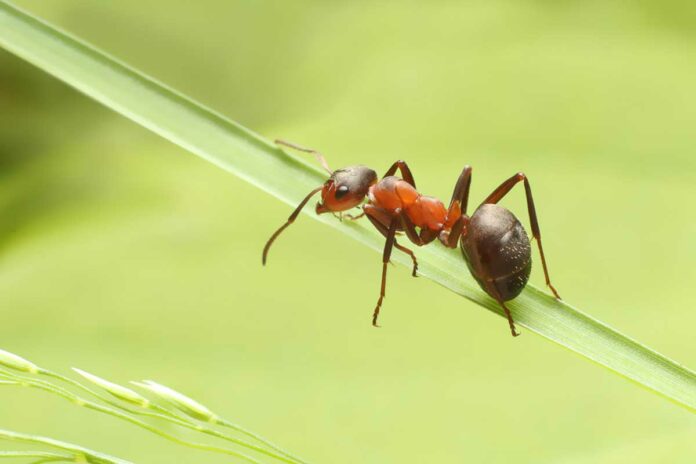Ants are fascinating creatures known for their remarkable strength and ability to carry objects many times their own weight. In this article, we will delve into the world of ants and explore just how much weight they can carry. Join us on this journey to uncover the astonishing capabilities of these tiny but mighty insects.
Introduction
Ants belong to the family Formicidae and are found in nearly every ecosystem on Earth. With over 12,000 known species, they display an incredible range of adaptations and behaviors. One of their most impressive traits is their ability to lift and carry objects that are significantly heavier than themselves.

How Much Does an Ant Weigh?
The weight of an ant can vary depending on the species and the individual ant’s size. On average, most individual ants weigh between 1 to 5 milligrams (mg). However, it’s important to note that ant weights can range significantly, with some larger species weighing up to a few milligrams, while smaller species may weigh just a fraction of a milligram. The weight of an ant is extremely light compared to many other organisms, as they are small in size and have a lightweight exoskeleton.

Anatomy of an Ant
Body Structure
To understand an ant’s carrying capacity, it’s essential to examine its body structure. Ants have three main body segments: the head, thorax, and abdomen. Their bodies are covered in a tough exoskeleton, which provides support and protection. Additionally, ants possess specialized appendages, such as mandibles, which aid in grasping and carrying objects.
Strength and Size
While ants are tiny in size, their strength is proportionately remarkable. The strength of an ant is attributed to its muscle structure and the composition of its exoskeleton. Certain ant species have stronger muscles and thicker exoskeletons, enabling them to carry even larger loads.

Ants and Their Abilities
Ants as Workers
Ant colonies consist of various castes, including workers, soldiers, and queens. Workers serve as the colony’s vital foundation, shouldering the responsibilities of foraging, tending to the nest, and nurturing the young. Their ability to carry objects plays a vital role in colony survival.
Carrying Capabilities
Ants exhibit remarkable carrying capabilities, often transporting food, building materials, and even other ants within their colonies. The amount of weight they can carry depends on several factors, including the species, size of the ant, and the specific task at hand.
Determining the Weight an Ant Can Carry
Experimental Findings
Scientists have conducted various experiments to determine the weight-carrying capacity of ants. These experiments involve placing different loads on the ants’ backs and observing their ability to walk and maneuver. Through these studies, researchers have gained valuable insights into the remarkable strength of ants.
Factors Affecting Carrying Capacity
The weight an ant can carry is influenced by several factors. These include the ant’s size, the surface area available for gripping the object, and the leverage it can achieve. Additionally, environmental factors such as temperature and humidity can impact an ant’s performance.
Examples of Ants’ Remarkable Strength
Army Ants
Army ants are known for their impressive strength and cooperative hunting strategies. They work together to overcome obstacles and carry large prey items back to the nest. The combined strength and coordination of the entire colony make them a force to be reckoned with in the insect world.
Leafcutter Ants
Leafcutter ants are exceptional in their ability to carry and transport leaf fragments many times their own size. These fragments are used as a substrate for cultivating a fungus that serves as their primary food source. The leafcutter ants’ strength and efficiency in cutting and carrying leaves are truly astonishing.
The Weight-to-Body Ratio of Ants
When comparing the weight of an ant to its body size, ants have one of the highest weight-to-body ratios among living organisms. This ratio allows them to carry loads that are several times their own weight, making them incredibly efficient workers within their colonies.
How Ants Carry Objects
Ants employ various techniques to carry objects efficiently. Some ants use their mandibles to grasp and lift items, while others use their heads or legs to bear the weight. Certain ant species even have specialized structures on their bodies that aid in carrying specific objects.
The Importance of Strength in Ants
Strength is a crucial attribute for ants, as it enables them to perform essential tasks within their colonies. From foraging and nest construction to defense and food transportation, the ability to carry objects significantly impacts the survival and success of an ant colony.
Conclusion
In conclusion, ants possess incredible strength relative to their size, allowing them to carry objects that seem impossible for such tiny creatures. Through their unique adaptations and cooperative behaviors, ants demonstrate the power of teamwork and efficiency in achieving remarkable feats. Next time you observe an ant carrying a load, take a moment to appreciate the incredible capabilities of these extraordinary insects.
FAQs
Yes, ants are known for their ability to carry objects that are much heavier than themselves. Their remarkable strength allows them to overcome this challenge.
The weight an ant can carry depends on factors such as the species, size of the ant, and environmental conditions. On average, ants can carry objects that weigh anywhere from 10 to 50 times their own weight.
Ants use a combination of their mandibles, legs, and body structures to lift and carry objects. They employ various techniques depending on the size and shape of the object.
No, the strength of ants varies among different species. Some ants have evolved to possess stronger muscles and thicker exoskeletons, enabling them to carry larger loads.
Not all ants engage in carrying objects. The division of labor within ant colonies means that specific castes or individuals are responsible for carrying tasks, while others focus on different duties.
Yes, ants have been observed carrying objects that are larger than their own bodies. They achieve this by leveraging their body strength and employing efficient carrying techniques.
Ants have highly efficient muscle structures and energy systems that allow them to sustain their carrying efforts for extended periods. They also take advantage of their small size and distribute the load across multiple legs, reducing strain on individual body parts.
Yes, certain ant species are known to carry live prey or even other insects as part of their hunting or territorial behaviors. They have adaptations such as strong mandibles and specialized appendages to facilitate such tasks.
Ants employ pheromones, chemical signals, as a means of communication among themselves. When carrying heavy objects, they may leave a trail of pheromones to guide other ants to the destination or to signal for assistance.
Ants’ remarkable carrying abilities have inspired scientists and engineers in the field of robotics and material transportation. Researchers have studied ants’ strength and strategies to develop more efficient systems for load-bearing and logistics in various industries.

